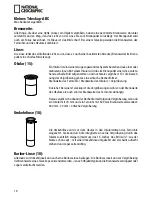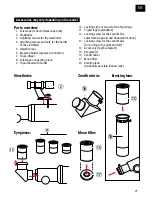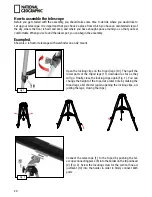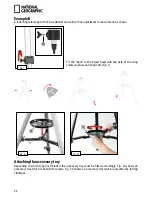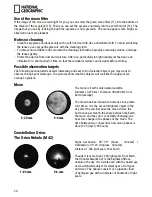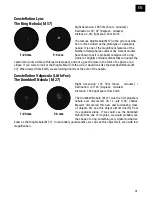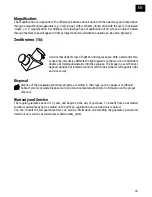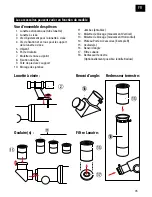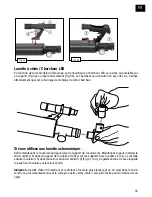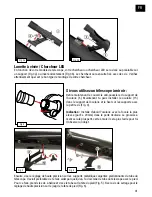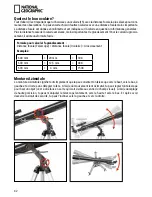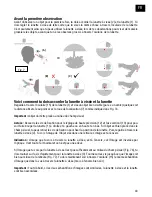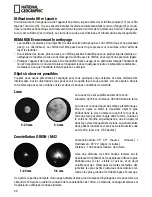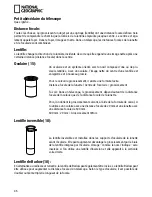
32
Telescope ABC’s
What do the following terms mean?
Focal width:
Everything that magnifies an object via an optic (lens) has a certain focal width. The focal width is the length
of the path the light travels from the surface of the lens to its focal point. The focal point is also referred to
as the focus. In focus, the image is clear. In the case of a telescope, the focal widths of the telescope tube
and the eyepieces are combined.
Lens:
The lens turns the light which falls on it around so that the light gives a clear image in the focal point after it
has traveled a certain distance (focal width).
Eyepiece (15):
An eyepiece is a system made for your eye and comprised of one or more
lenses. In an eyepiece, the clear image that is generated in the focal point of a
lens is captured and magnified even more. There is a simple formula for cal
-
culating the magnification: Focal width of the telescope tube / Focal width of
the eyepiece = Magnification
In a telescope, the magnification depends on both the focal width of the tele
-
scope tube and the focal width of the eyepiece.
From this formula, we see that if you use an eyepiece with a focal width of
20 mm and a telescope tube with a focal width of 600 mm, you will get the
following magnification: 600 mm / 20 mm = 30 times magnification
Erecting lens (18):
The erecting lens is set into the eyepiece holder of the telescope before the
eyepiece itself. This lens can produce an additional magnification (mostly
around 1.5 X) via the integrated lens in the eyepiece. The image will be turned
around if you use an erecting lens, but it appears upright and even properly
oriented on the vertical axis.
Barlow Lens (18):
As an alternative to the erecting lens, a Barlow lens can also be included. The Barlow lens can be used to
increase the focal width of a telescope. Depending on the type of lens, it is possible to double or even to
triple the focal width.

